Things to see
In Speyer, the Palatinate is beginning to become Italy," say the Palatines. This is not by chance. Characterized by the mild climate conditions and the many hours of sunshine, between the German Wine Route and the Odenwald, Speyer lies on the left bank of the Rhine. Between the magnificent buildings and idyllic squares, picturesque nooks and crannies, promenades and alleyways, a Mediterranean atmosphere and Palatinate lifestyle is spreading.
As an extremely important city in the Holy Roman Empire of the German Nation, Speyer tells exciting stories from times gone by. Spira, as it was then called, is today a true place of learning full of sights for young and old. Attractive leisure activities and a full calendar of events await vacationers.
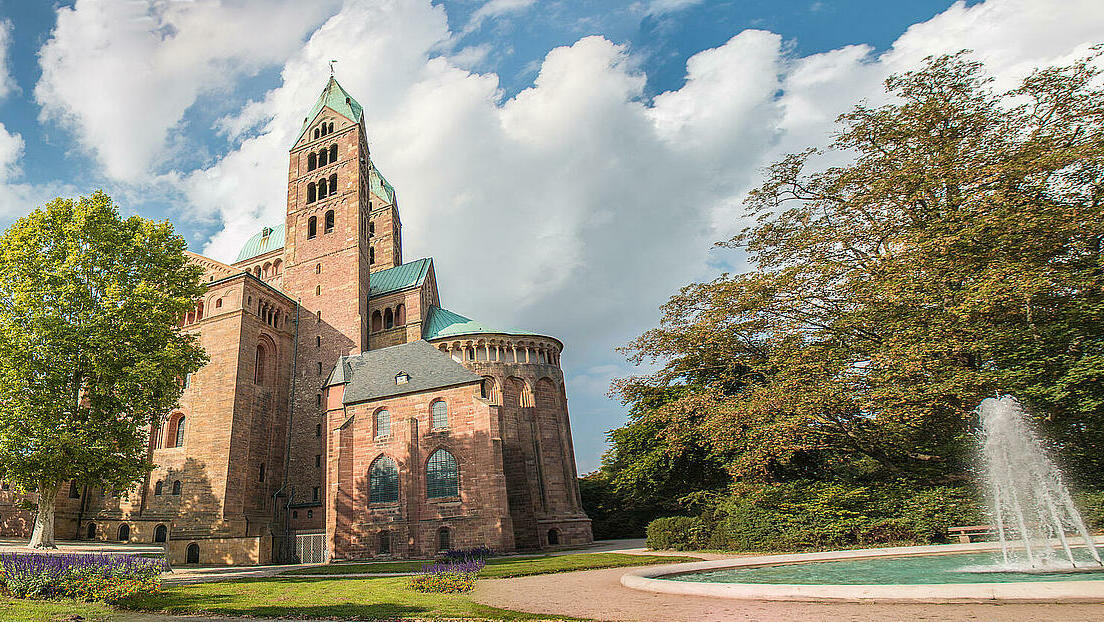
Speyer Cathedral - a UNESCO World Cultural Heritage Site
Since 1981, Speyer's imperial cathedral has been a UNESCO World Cultural Heritage Site, making it the second German monument after Aachen Cathedral to make it onto this list. It has been an episcopal cathedral, parish church and place of pilgrimage for almost 1000 years now. Four emperors, three empresses and four kings of the Middle Ages are buried here. It is one of the most important buildings in Germany and is the largest preserved Romanesque church in Europe. Not only the main nave is worth seeing, but also the crypt, the emperor's hall and the viewing platform as well as the cathedral cup, the Mount of Olives and the cathedral garden.
Cathedral opening hours
Mon-Sat: 9-17 o'clock
Sundays and holidays: 11:30-17
Restrictions possible. Please note the different opening hours.
Historical Museum of the Palatinate
With its unique exhibits and spectacular productions, the Historical Museum of the Palatinate has been one of the most important museums in Germany for many years and, with over 200,000 visitors per year, is one of the top attractions in the city.
The impressive building, which is more than a hundred years old, is located in the middle of the old town of Speyer, only a minute's walk from the imperial cathedral of Speyer. It presents outstanding temporary exhibitions on topics of archaeology, history, art and culture as well as collection exhibitions on Palatinate history with holdings from the Stone Age to the 20th century.
In the five collection exhibitions, visitors can travel from prehistory through the Roman period to modern times. In addition, the museum presents the Speyer cathedral treasure with precious exhibits and the oldest German wine museum.
In 1999, the "Junge Museum Speyer" opened its doors as the first museum in Rhineland-Palatinate designed especially for children and young people. Here young people are introduced to culture in a playful and child-friendly manner.
Current exhibition: Medicus - The Power of Knowledge (until 13.6.2021)
Afterwards: Rendezvous. French military in the Palatinate 1945-1999 (May 9, 2021 to January 29, 2022)
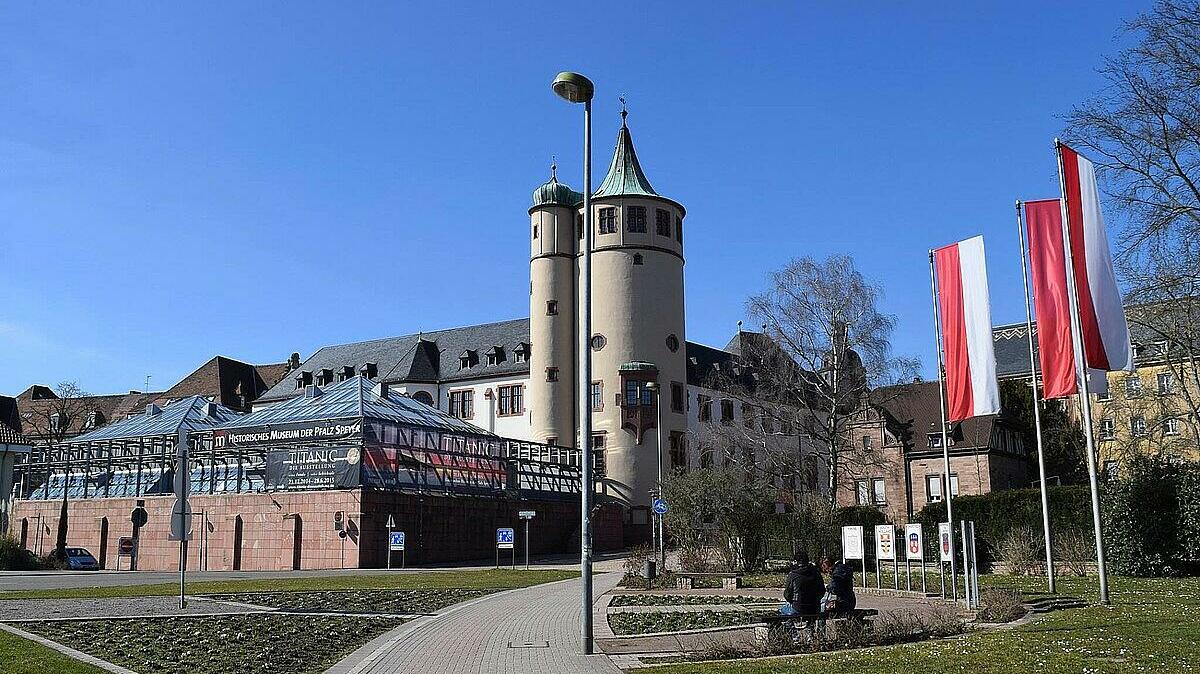
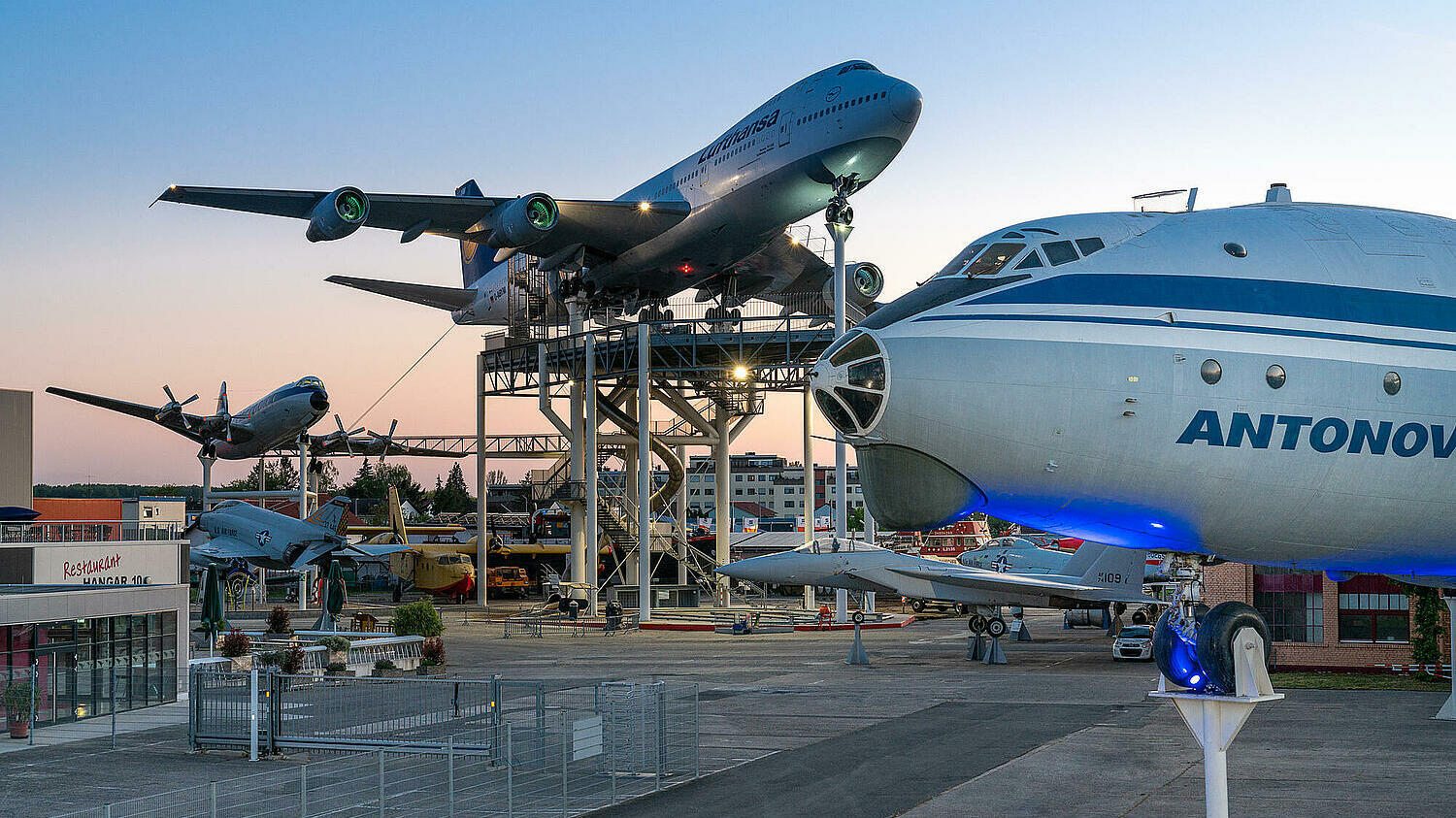
Technic Museum Speyer
Since the beginning of the 1990s, the Technik Museum Speyer has been presenting a large number of technical constructions, some of them special, from the vehicle and aircraft construction industry on a hall area of 25,000 square meters and 100,000 square meters of outdoor space. Furthermore, the museum grounds include the naval building and a model construction museum as well as an IMAX movie theater with a 24-meter-diameter dome-shaped screen with a projection area of approximately 1000 square meters.
The main attractions are the U9, a 466-ton submarine of the German Navy, a Boeing 747 and the largest space exhibition in Europe with the space glider Buran, the Russian counterpart to the space shuttle.
Sea Life
The "Sea Life" is more than just an aquarium: Located directly at the Speyer marina, it takes visitors on a journey through the local and tropical underwater world. River, sea and marine animals are presented equally. The journey follows the course of the Rhine from the mountain spring over Lake Constance to the port of Rotterdam, crosses the North Sea and the depths of the Atlantic Ocean and continues to the coral reefs of the tropical oceans.
Around 3,000 creatures from various waters cavort in over 40 basins - from anemones to rays and sharks to sea turtles. A tropical coral reef in a 180 degree viewing basin is particularly beautiful. At the "touch basin", visitors can get in close contact with cleaner shrimps and starfish. Interesting and instructive are also the daily changing, commented show feedings.
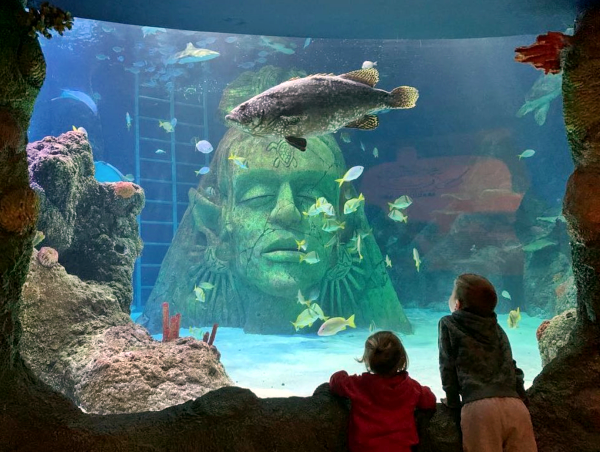
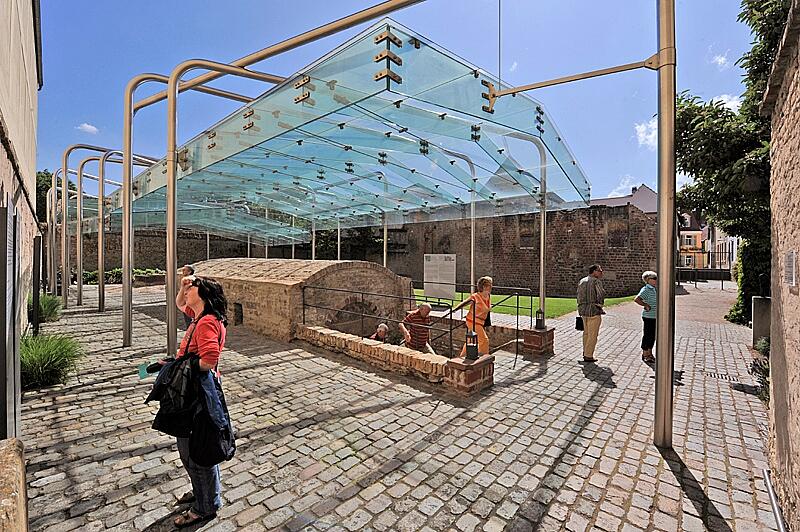
The Jewish Heritage - SchUM Cities
In the Middle Ages, the Jewish communities in the cities of Speyer, Worms and Mainz on the Middle Rhine formed an alliance that deeply influenced the architecture, culture, religion and jurisdiction of the Central and Eastern European Jewish diaspora and continues to do so today.
Between 1084 and 1349 a rich Jewish community life developed in Speyer. Stone witnesses to this past are the ruins of the synagogue and the Mikwe ritual bath. In the Judenhof and the SchPIRA Museum you can immerse yourself in this epoch.
The Jewish community is once again visibly back in the life of Speyer. Exactly 73 years after the destruction of the old church by the National Socialists, the traditional SchUM city of Speyer has built a new synagogue "Beith-Shalom".
In 2021, UNESCO will decide whether the SchUM cities with their Jewish heritage will become UNESCO world cultural heritage sites.
The "Altpörtel"
The "Altpörtel" is the former western main gate of the medieval town fortifications and a visible testimony to the town's history. From 1512 to 1514, it was extended to include the top floor of the tower with a late-Gothic tracery balustrade and a surrounding arcade gallery with 154 steps leading up to it.
When you reach the top, you should retract your stomach, as the circulation is very narrow. However, in view of the breathtaking panorama, you automatically hold your breath. From up here you have a wide view of the Palatinate Forest, across the Rhine plain and of the Odenwald.
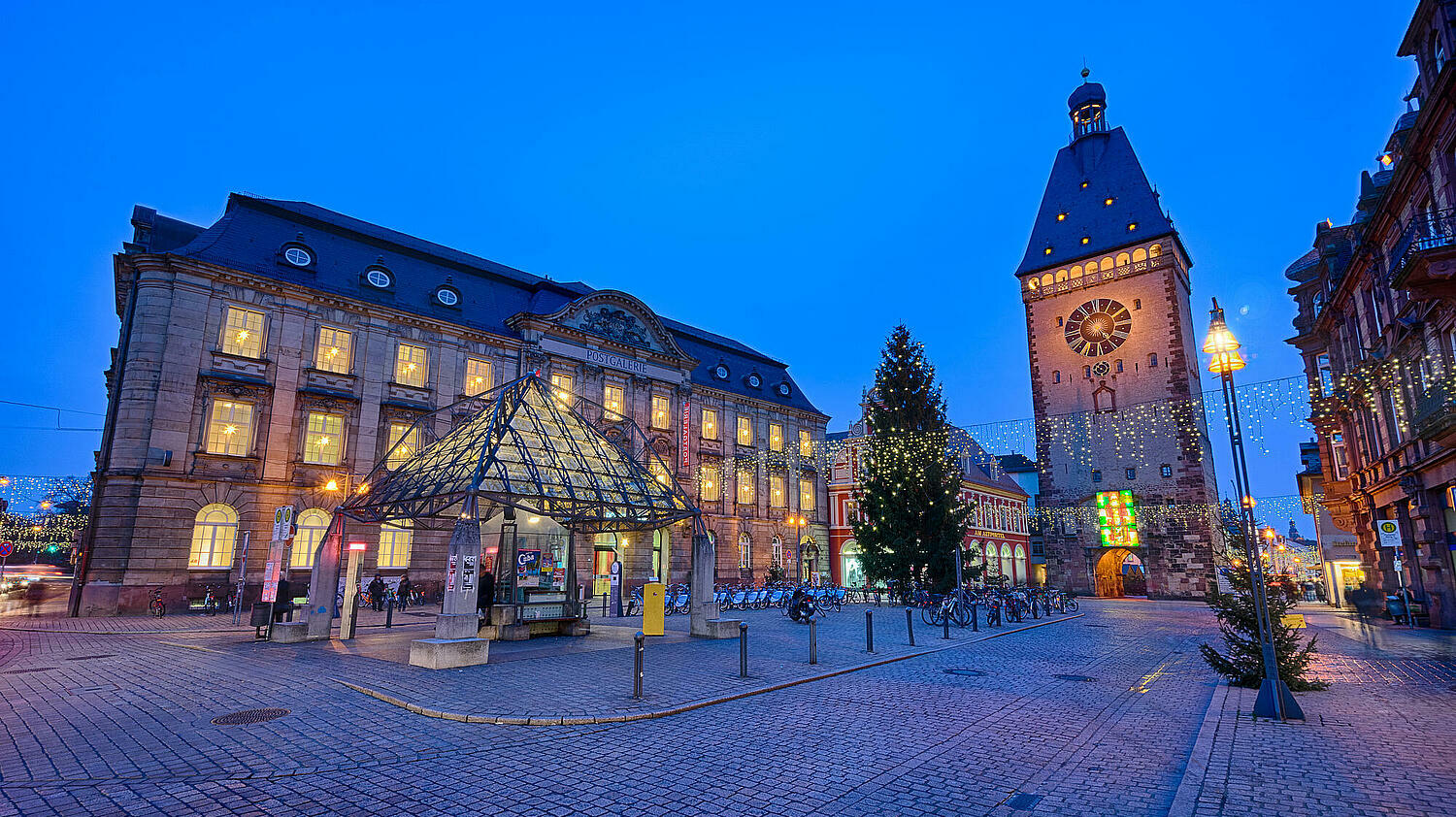
Further sights
In addition to the listed top attractions, there are many other smaller, but still worth seeing cultural and historical sights to discover in Speyer. Here you will find all the sights, museums and even shopping tips.
On tour by (e)-bike
By choosing Speyer as the starting point for your vacation, you have done everything right. The cathedral city is ideally located between the German Wine Route in the west and the Odenwald in the east. Due to our location in the middle of the Rhine-Neckar Metropolitan Region, with short distances to Ludwigshafen, Mannheim and Heidelberg, Speyer is not only an excellent business location, but also an ideal starting point for tourists to explore the region and its countless "Things-to-see". We have listed four particularly recommendable "tours" here as examples. We would be happy to advise you on site about further excursion possibilities and particularly beautiful cycling and hiking routes.
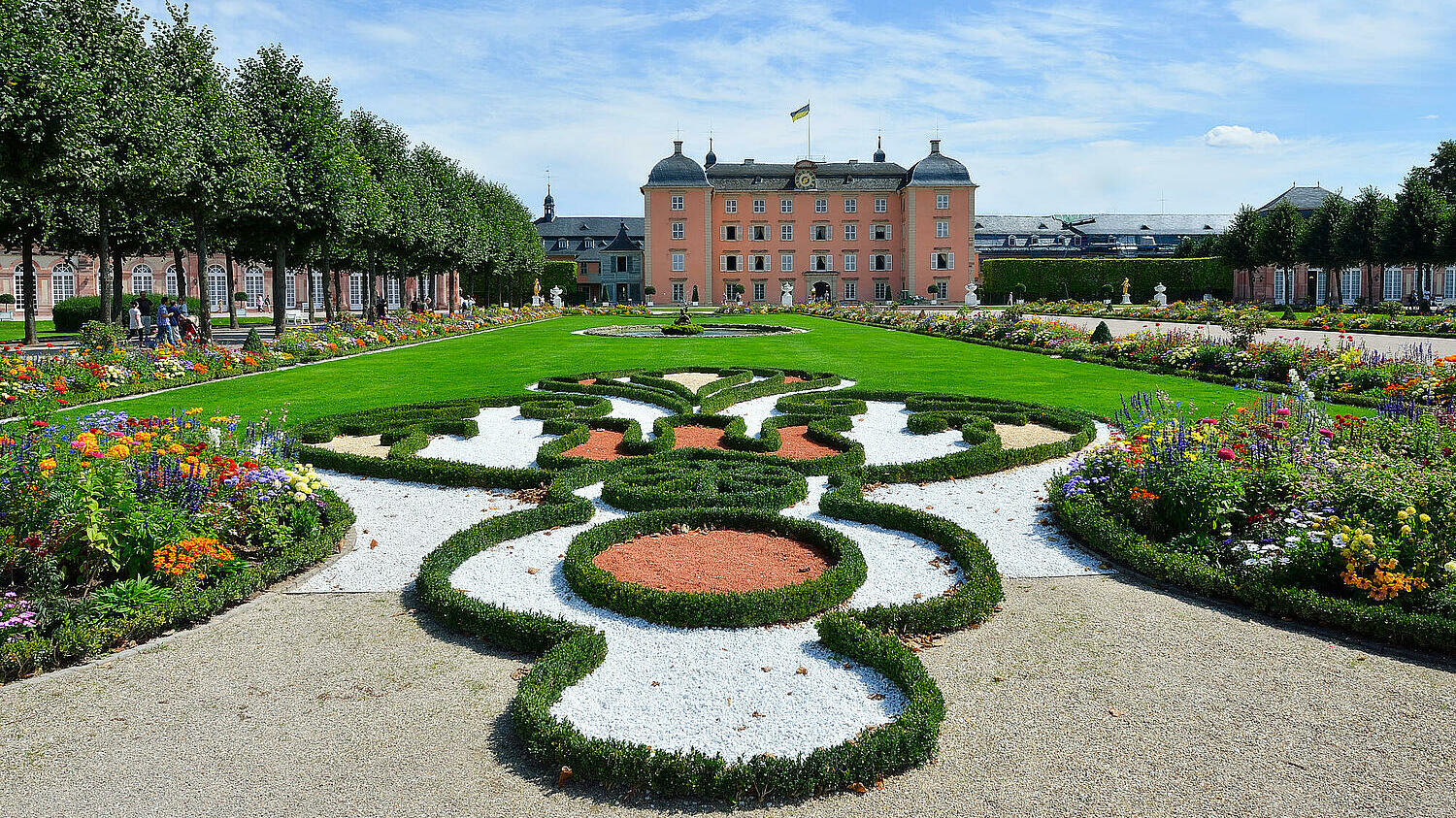
Schwetzingen Castle with castle garden
Schwetzingen, known above all for its imposing castle, at that time the summer residence of the Electoral Palatinate court, shining in the Baroque era, where the romantic castle park, a mixture of a Baroque pleasure garden and English landscape garden, is hidden behind it. The garden also has a garden mosque, which is the only one of its kind in Europe. Music and culture, castle garden and shopping town, history and present, leisure and enjoyment - Schwetzingen is a city that has much to offer. The city also invites you to stroll through the small streets of the cultural and asparagus city of Schwetzingen.
Between the beginning of March and the middle to end of April, the entire palace garden turns bright pink with a sea of cherry blossoms. An absolute highlight and especially "instagramable".
Day trip Schwetzingen
Bike distance simple: 15,4km
Duration: approx. 1h
Restaurant recommendation:
- Schwetzinger Brauhaus zum Ritter (homebrewed beer, directly at the Schlossplatz1)
- Gartenwirtschaft Johanneshof (located almost exactly halfway)
Hambacher Schloss & Pfälzer Wein
Since the black-red-golden flag first flew on the Kastanienberg near Neustadt in May 1832, Hambach Castle, together with Frankfurt's Paulskirche, has been considered the cradle of German democracy. The castle is located at 376m above sea level - from there you can enjoy a great view over the Rhine valley.
We recommend the permanent exhibition "Up, up to the castle!" on the history of German democracy. This is open all year round and daily between 10 am and 6 pm (from November to March between 11 am and 5 pm).
Day trip Hambach Castle
Bike distance single: 28,6km
Duration: approx. 2h
As a conclusion, we can recommend two great locations, which are an absolute "place-to-be" in the Palatinate during the summer months to enjoy a good sip (or several) of Palatinate wine or the famous "Pfälzer Schorle".
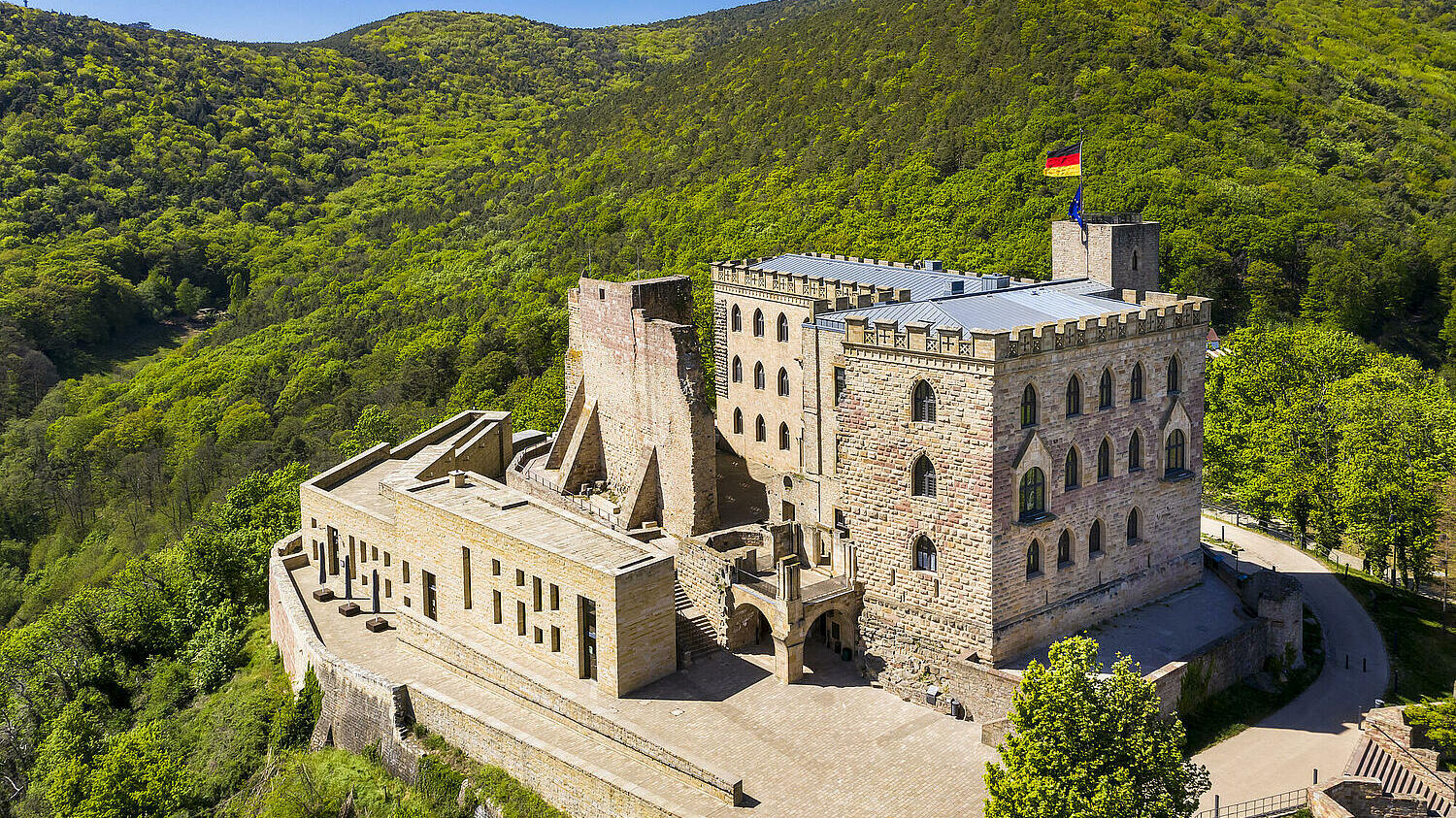
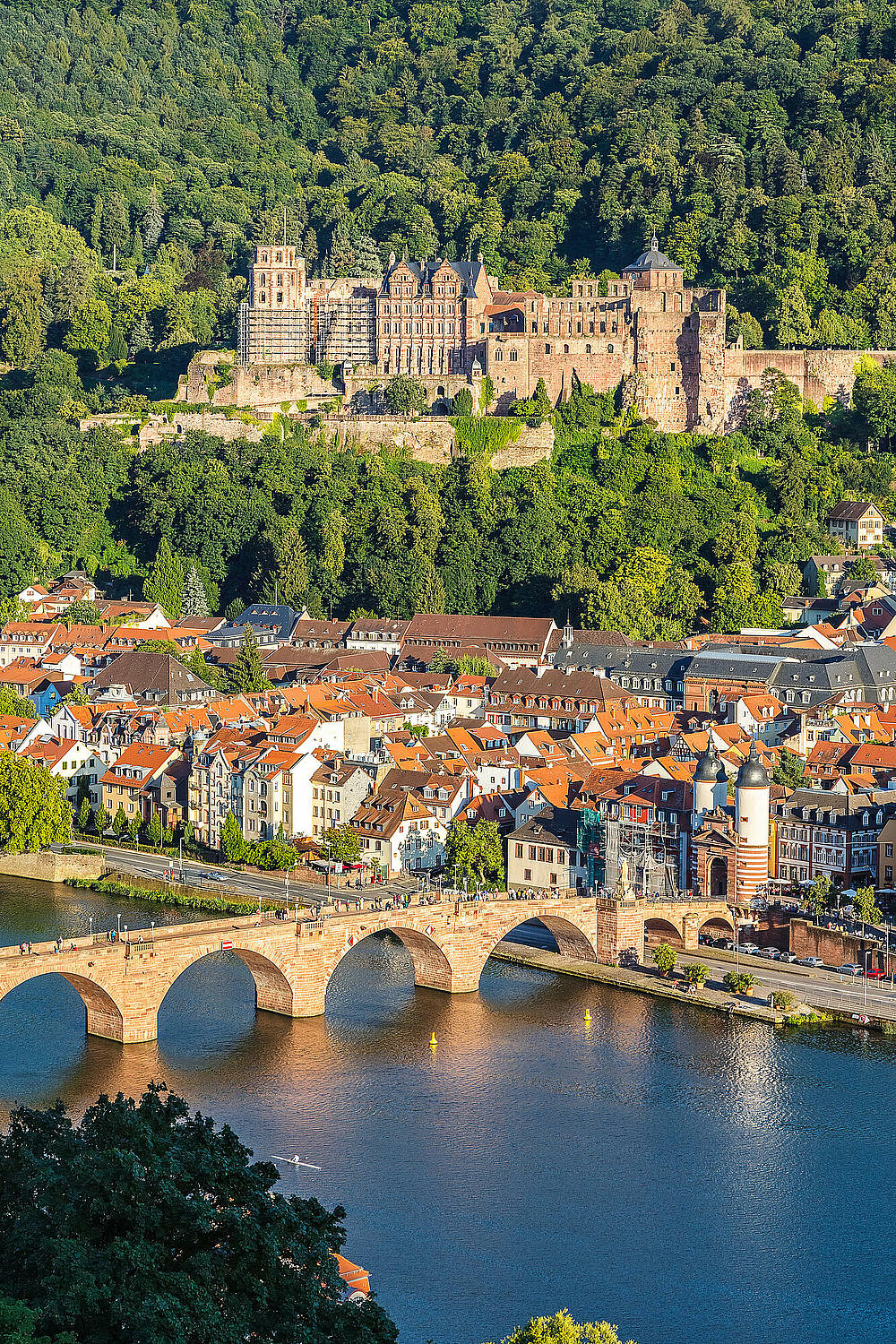
Heidelberg old town and castle
An absolute "must-see" in our region is Heidelberg with its historic old town. From the picturesque Old Town and the Philosophers' Path to the Königstuhl, Heidelberg offers a particularly large number of sights. The main attraction, however, is the Heidelberg Castle. It is world-famous and the epitome of German romanticism. The castle ruins are majestically enthroned above the roofs of the old town. For five centuries the Electors of the Palatinate resided there. Today, the mysterious castle attracts several million tourists every year.
Day trip Heidelberg
Bike distance single: 28,5km
Duration: approx. 2h
Be sure to take Germany's longest mountain railroad (1.5km) from the valley station "Kornmarkt" up to the castle and then to the Königsstuhl. From up here you can enjoy a breathtaking view over Heidelberg and the Neckar valley.
Restaurant recommendation:
- River-Cafe (small but nice, very popular restaurant with terrace on the Neckar river)
- Heid's (Steakhouse in stylish wooden cabin with leather furniture, fireplace, garden lounge and DJ)
- 959 ( Chic restaurant with terrace in the city garden, large bar and a huge wine selection)
Our VIP-Guestbook
Of course every guest is treated like a "VIP". Nevertheless, there are some well-known personalities who have been our guests over the past years. Please take a look at our "VIP Guestbook".
History of the hotel and the "Hausbrauerei"
In the anniversary year of the city of Speyer, which celebrated its 2000th anniversary in 1990, the Hotel Domhof was opened. But sleeping, eating and drinking had been done here long before. Crowned heads were guests on this site. Emperor Sigismund, for example, over 500 years ago, or King Wenceslas.
And many, many of their "colleagues".

It was from here that Henry IV set out on his famous "journey to Canossa". In 1340 the Speyer city council bought this property from the family of the citizen Ebelin and made it the "Ratshof" not only for meetings, the estate also served as a hotel for Germany's kings and emperors when they came to Speyer. And they came often. Many imperial diets were held here. One of them was particularly important: in 1529 the Protestant (Evangelical) Church was founded at this place, when five imperial princes and the representatives of 14 imperial cities put their protest against the predominance of the Catholic Church on record. In a document dated December 24, 1347, King Charles V described this site, on which the Domhof brewery and hotel now stand, as "his and the empire's" hotel. "...hern Ebelins hof before the münster (the cathedral), which is our and dez riches hostel, from our forefathers, roman kunigen and keisern...". However, the celebrations were not as good as they are today. This area in the shadow of the cathedral towers was reserved for "a Roman king, when he goes there
kömmet" and for the high council of the city of Speyer. "To hold weddings, guests, meetings, dances or other events" was "not allowed" at that time, writes Friedrich Lehmann in his chronicle of 1711.
This did not change much when this area later became the center of Germany and even Europe: in 1530/31 the Imperial Chamber Court moved in here, the highest legal authority of the German Empire, which sometimes extended as far as Sicily. Here all important legal decisions were made (if they were made at all: the Imperial Chamber Court was known for its sluggish way of negotiating). But then overnight everything came to an end. In 1689, the French burned down the whole city, including the buildings of the Imperial Chamber Court, which were estimated at 80,000 guldens (for comparison: a small church including tower and bells cost about 12,000 guldens). The city never really recovered from this destruction. The Reichskammergericht remained in ruins, with one part still relatively best preserved: the present hotel entrance.
From 1704 on, this building served as a grammar school for over 100 years. Today's "Barbarossa Hall" was then a school theater, but it is said to have been the "Comoedienhaus" already during the time of the Reich Chamber Court. A cinema with 500 seats on the first floor and on the balcony was this house once (1928 to 1963 as "Alhambra Theater"). After that the closed down movie theater was used as a flea market and then had to be completely renovated. Today's house brewery Domhof is, historically speaking, much younger than the hotel: The house was built in 1821 as the "German School for Boys and Girls" on the site where, after the city fire, low-grade huts and cottages had been built into the ruins. The schoolyard, now a beer garden, was levelled by the city council some 25 years later, and for this purpose, among other things, the old library of the Reichskammergericht (the Reich Chamber Court) was demolished (as an "old, dilapidated ancillary building"). The foundation walls of this library and the buildings in the heart of the old Reichskammergericht can still be seen in the underground car park today.
